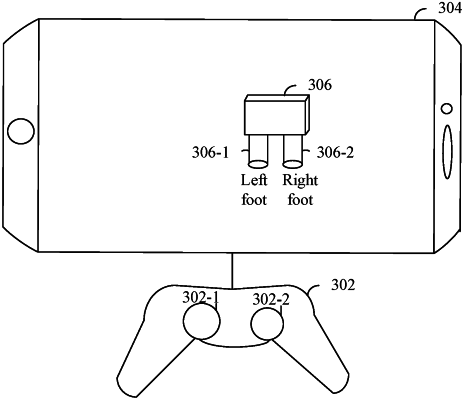| CPC A63F 13/42 (2014.09) [A63F 13/218 (2014.09); A63F 13/65 (2014.09); A63F 13/92 (2014.09); A63F 2300/1056 (2013.01); A63F 2300/1068 (2013.01); A63F 2300/8082 (2013.01)] | 21 Claims |

|
1. A method for controlling a virtual object, the method comprising:
displaying, by a device comprising a memory storing instructions and a processor in communication with the memory, a 3D virtual object in a 3D virtual scene comprising a first virtual feature comprising a body part of the 3D virtual object;
determining, by the device, a force direction of a first force with which a first operation is performed on a directional joystick matching the first virtual feature;
determining a first simulated force based on the force direction and a duration of the first operation performed on the directional joystick, wherein the determining the first simulated force comprises:
performing coordinate transformation using a first coordinate transformation matrix that matches a viewing angle direction in the 3D virtual scene and a first direction vector corresponding to the force direction to determine a direction of the first simulated force;
simulating a first 3D movement of the first virtual feature by applying the first simulated force on the first virtual feature according to a physics law; and
rendering and displaying the first 3D movement of the first virtual feature.
|